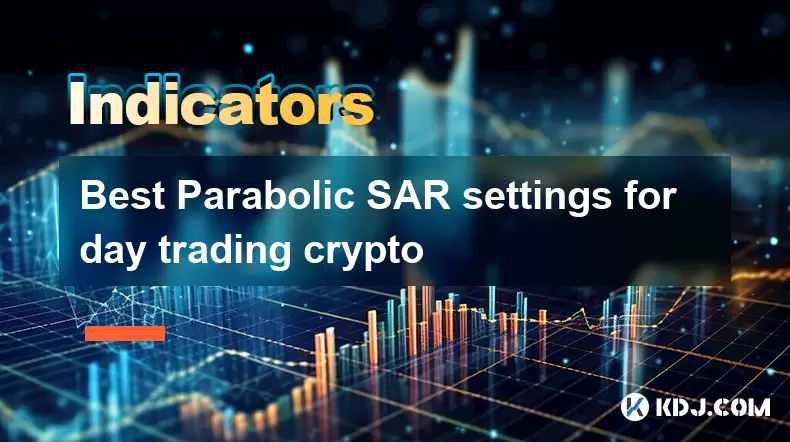-
 Bitcoin
Bitcoin $120400
1.77% -
 Ethereum
Ethereum $3615
7.90% -
 XRP
XRP $3.580
17.84% -
 Tether USDt
Tether USDt $1.001
0.06% -
 BNB
BNB $729.4
1.25% -
 Solana
Solana $179.9
5.04% -
 USDC
USDC $0.0000
0.01% -
 Dogecoin
Dogecoin $0.2311
8.22% -
 TRON
TRON $0.3226
4.04% -
 Cardano
Cardano $0.8490
12.85% -
 Hyperliquid
Hyperliquid $46.45
0.72% -
 Stellar
Stellar $0.4913
8.54% -
 Sui
Sui $4.027
2.00% -
 Chainlink
Chainlink $18.51
11.67% -
 Hedera
Hedera $0.2818
21.51% -
 Avalanche
Avalanche $24.03
7.40% -
 Bitcoin Cash
Bitcoin Cash $508.5
2.90% -
 Shiba Inu
Shiba Inu $0.00001496
3.24% -
 UNUS SED LEO
UNUS SED LEO $8.961
1.83% -
 Toncoin
Toncoin $3.264
3.13% -
 Litecoin
Litecoin $104.6
8.15% -
 Polkadot
Polkadot $4.389
6.11% -
 Uniswap
Uniswap $9.924
10.63% -
 Monero
Monero $337.9
0.49% -
 Pepe
Pepe $0.00001376
2.79% -
 Bitget Token
Bitget Token $4.830
2.46% -
 Ethena USDe
Ethena USDe $1.001
0.05% -
 Dai
Dai $1.000
0.02% -
 Aave
Aave $325.2
1.66% -
 Bittensor
Bittensor $423.7
-0.85%
Best Parabolic SAR settings for day trading crypto
Optimize Parabolic SAR settings for crypto day trading by adjusting acceleration factors and combining with EMA or RSI to improve signal accuracy and reduce false reversals.
Jul 17, 2025 at 09:14 am

Understanding the Parabolic SAR Indicator
The Parabolic SAR (Stop and Reverse) is a technical analysis tool primarily used by traders to identify potential reversals in price movement. Developed by Welles Wilder, it is especially popular among day traders due to its ability to signal entry and exit points effectively. In the context of day trading crypto, where volatility can be extreme, using the right settings for this indicator becomes crucial.
This indicator appears on charts as a series of dots placed either above or below the price bars. When the dot flips from one side of the price to the other, it signals a potential reversal. While the default settings are often used, they may not always suit the fast-paced nature of cryptocurrency markets.
Why Default Settings Might Not Be Ideal for Crypto Day Trading
Most charting platforms use the default parameters of 0.02 for acceleration factor and 0.2 for maximum acceleration when applying the Parabolic SAR. However, these values were designed with slower-moving markets like commodities or stocks in mind.
In crypto markets, where prices can swing dramatically within minutes, the standard settings may produce too many false signals or lag behind actual trend changes. This makes it less reliable for intraday strategies unless adjusted properly. Traders need to tweak the parameters to suit the specific behavior of cryptocurrencies such as Bitcoin, Ethereum, or altcoins.
Optimal Parabolic SAR Settings for Crypto Day Trading
To improve responsiveness and reduce noise, many experienced crypto traders adjust the acceleration factor (AF) and maximum acceleration (Max AF) values. A commonly recommended setting for intraday trading in volatile crypto pairs is:
- Acceleration Factor: 0.01
- Maximum Acceleration: 0.2
These values allow the SAR to react more quickly to price changes without becoming overly sensitive. Some traders even go lower than 0.01 depending on the asset and timeframe being traded.
It's also important to note that different cryptocurrencies may require slightly different settings. For example, Bitcoin might perform better with a slightly higher acceleration factor compared to small-cap altcoins, which tend to move faster but with more erratic patterns.
Combining Parabolic SAR with Other Indicators
Using the Parabolic SAR alone can lead to whipsaws and misleading signals, especially during sideways or choppy market conditions. To enhance accuracy, it’s often combined with other indicators that confirm trends or filter out false signals.
One effective combination involves using the EMA (Exponential Moving Average) alongside the Parabolic SAR. For instance, a trader might only consider buy signals when the price is above the 20 EMA and the SAR dot appears below the price. Conversely, sell signals could be filtered using the same logic with the price below the 20 EMA.
Another useful companion is the Relative Strength Index (RSI). By ensuring that RSI is not in overbought (>70) or oversold (<30) territory before entering a trade, traders can avoid false reversals caused by short-term extremes.
Backtesting Your Parabolic SAR Strategy
Before applying any strategy to live trading, it's essential to backtest it thoroughly using historical data. This helps verify whether your chosen Parabolic SAR settings work well with the crypto pair you're interested in.
Here’s how to do it step-by-step:
- Choose a crypto pair (e.g., BTC/USDT or ETH/USDT)
- Apply the modified Parabolic SAR settings
- Overlay additional filters like EMA or RSI
- Use a platform like TradingView or MetaTrader to run the test
- Review win rate, average gain/loss, and number of signals generated
During this process, pay attention to how the system performs across multiple market cycles — bull runs, bear phases, and consolidation periods. If your setup consistently generates profitable trades with acceptable risk, it might be suitable for real-time application.
Common Mistakes to Avoid When Using Parabolic SAR in Crypto
Even with optimized settings, some pitfalls can undermine your trading results. One common mistake is overtrading based solely on SAR signals without confirming with volume or other indicators. Another issue is using the same settings across all timeframes, which can distort performance.
Traders also sometimes ignore the market context. For instance, applying SAR in a ranging market without proper filters can result in repeated losses. It’s best suited for trending environments.
Lastly, failing to adjust stop-loss levels dynamically in line with SAR movements can expose traders to unnecessary risks. The SAR itself can act as a trailing stop mechanism, helping lock in profits as the trend progresses.
Frequently Asked Questions
Q: Can I use Parabolic SAR for scalping crypto?
A: Yes, but with caution. Scalping requires ultra-fast decision-making, so Parabolic SAR must be paired with high-frequency indicators like Volume Profile or Order Flow to increase reliability.
Q: Should I adjust SAR settings for different timeframes?
A: Absolutely. Shorter timeframes like 1-minute or 5-minute charts usually benefit from smaller acceleration factors (e.g., 0.005–0.01), while longer intervals like 1-hour charts may perform better with 0.02 or higher.
Q: Does Parabolic SAR work well with leverage trading?
A: It can, but increased leverage amplifies both gains and losses. Always combine it with strict risk management rules and ensure your SAR-based entries align with broader market sentiment.
Q: Is there a way to automate Parabolic SAR-based trades in crypto?
A: Yes, many trading platforms support automated strategies via APIs or built-in scripting. You can code your SAR-based logic using Pine Script on TradingView or integrate bots like Gunbot or HaasBot for execution.
Disclaimer:info@kdj.com
The information provided is not trading advice. kdj.com does not assume any responsibility for any investments made based on the information provided in this article. Cryptocurrencies are highly volatile and it is highly recommended that you invest with caution after thorough research!
If you believe that the content used on this website infringes your copyright, please contact us immediately (info@kdj.com) and we will delete it promptly.
- Bitcoin Whale's $9.6B Galaxy Digital Move: Profit-Taking or Strategic Play?
- 2025-07-18 14:30:12
- Alchemy Pay, Crypto-Finance, and Hong Kong: A Budding Hub?
- 2025-07-18 14:30:12
- Dave Portnoy's XRP Regret: A Crypto Dump Disaster?
- 2025-07-18 15:10:12
- XRP Price Surges to 7-Year High: Expert Predictions and Market Analysis
- 2025-07-18 15:10:12
- Crypto Market Cap Nears $4T: Can It Rival the Biggest Companies?
- 2025-07-18 14:50:12
- Binners Alpha, TrutaAI, Andken ERA: A New Era?
- 2025-07-18 14:50:12
Related knowledge

Advanced RSI strategies for crypto
Jul 13,2025 at 11:01am
Understanding the Basics of RSI in Cryptocurrency TradingThe Relative Strength Index (RSI) is a momentum oscillator used to measure the speed and chan...

Crypto RSI for day trading
Jul 12,2025 at 11:14am
Understanding RSI in the Context of Cryptocurrency TradingThe Relative Strength Index (RSI) is a momentum oscillator used to measure the speed and cha...

Crypto RSI for scalping
Jul 12,2025 at 11:00pm
Understanding RSI in the Context of Crypto TradingThe Relative Strength Index (RSI) is a momentum oscillator widely used by traders to measure the spe...

What does an RSI of 30 mean in crypto
Jul 15,2025 at 07:07pm
Understanding RSI in Cryptocurrency TradingRelative Strength Index (RSI) is a momentum oscillator widely used in cryptocurrency trading to measure the...

What does an RSI of 70 mean in crypto
Jul 13,2025 at 06:07pm
Understanding the RSI Indicator in Cryptocurrency TradingThe Relative Strength Index (RSI) is a widely used technical analysis tool that helps traders...

Does RSI work in a bear market for crypto
Jul 16,2025 at 01:36pm
Understanding RSI in Cryptocurrency TradingThe Relative Strength Index (RSI) is a momentum oscillator used by traders to measure the speed and change ...

Advanced RSI strategies for crypto
Jul 13,2025 at 11:01am
Understanding the Basics of RSI in Cryptocurrency TradingThe Relative Strength Index (RSI) is a momentum oscillator used to measure the speed and chan...

Crypto RSI for day trading
Jul 12,2025 at 11:14am
Understanding RSI in the Context of Cryptocurrency TradingThe Relative Strength Index (RSI) is a momentum oscillator used to measure the speed and cha...

Crypto RSI for scalping
Jul 12,2025 at 11:00pm
Understanding RSI in the Context of Crypto TradingThe Relative Strength Index (RSI) is a momentum oscillator widely used by traders to measure the spe...

What does an RSI of 30 mean in crypto
Jul 15,2025 at 07:07pm
Understanding RSI in Cryptocurrency TradingRelative Strength Index (RSI) is a momentum oscillator widely used in cryptocurrency trading to measure the...

What does an RSI of 70 mean in crypto
Jul 13,2025 at 06:07pm
Understanding the RSI Indicator in Cryptocurrency TradingThe Relative Strength Index (RSI) is a widely used technical analysis tool that helps traders...

Does RSI work in a bear market for crypto
Jul 16,2025 at 01:36pm
Understanding RSI in Cryptocurrency TradingThe Relative Strength Index (RSI) is a momentum oscillator used by traders to measure the speed and change ...
See all articles

























































































